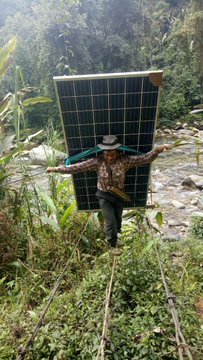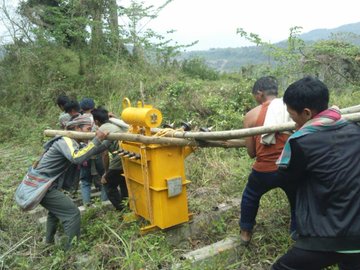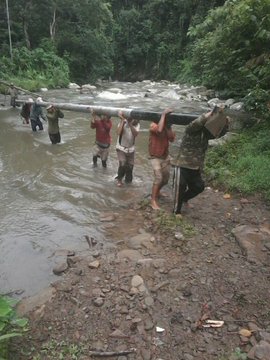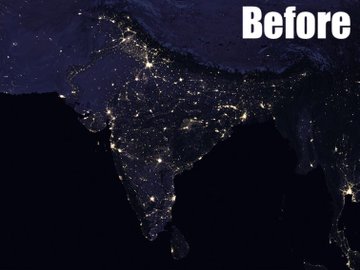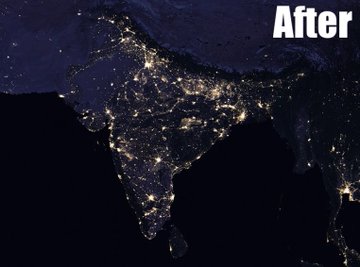Answer by
Satyarth Routroy
Bharatiya Odia thru Quora Digest
A) Basic differences between Narendra Modi and Rahul Gandhi:-
- Narendra Modi belongs to a typical common & poor Indian family whom Congress leaders mocked as “chaiwala” (tea seller) because he used to sell tea to help his family. Rahul Gandhi belongs to the largest political dynasty in India who is considered the “kuldeepak” (heir) of the Congress party.
- Narendra Modi joined politics because he wanted to serve his nation. Rahul Gandhi joined politics because his mother asked him to look after their family profession.
- Narendra Modi has wisdom and political sense. Rahul Gandhi is talented in making political nonsense.
- Narendra Modi is a typical native Indian common man while Rahul Gandhi has foreign blood in his veins.
- Narendra Modi has good sense of humor, while Rahul Gandhi acts like a comedian.
- Narendra Modi has only Indian citizenship. Rahul Gandhi has been alleged of having multiple citizenship from different countries.
- Narendra Modi has no money except the salary he gets as the Prime Minister. Rahul Gandhi has huge property, land assets, stakes in business farms, shops in malls, etc. Source:- Rahul Gandhi’s past businesses: A BPO firm, shops, land
B) Difference between Narendra Modi and Rahul Gandhi based on their interactions with common people:-
1) Women empowerment and respect to women: Whenever Rahul Gandhi is asked about Congress’ manifesto, he always utters one point as a mandatory aspect- Women Empowerment. Let’s see something:-
Narendra Modi bows down and touches elder women’s feet as a gesture of respect. Rahul Gandhi, who always talks about women empowerment, lets elder women touch his feet.

2) Respect to elders: Narendra Modi bows down to touch elder persons’ feet as a gesture of respect. On the other hand, Rahul Gandhi gets his feet touched by elder people.

3) Relation with party members: Narendra Modi treats his party members with respect whether they are party workers, junior members or senior leaders. On the other hand, Rahul Gandhi treats his party members as his sycophants.

4) Attending political rival’s funeral ceremony: When Narendra Modi was consoling grief stricken CM Panneerselvam at Jayalalitha’s funeral, Rahul Gandhi was laughing and having fun with like minded people like Gulam Nabi Azad.

C) Difference between Narendra Modi and Rahul Gandhi based on their performance and attitude:
- Narendra Modi works for 16–18 hours per day. He didn’t take any single holiday. Rahul Gandhi works less and always takes long secret holidays without anybody’s knowledge. Sometimes he goes to Europe, sometimes he goes to Thailand.
- Narendra Modi takes bold decisions like demonetization, surgical strikes, restriction on cash donation to parties at Rs. 2000, etc. On the other hand, Rahul Gandhi’s performances include issues like:-
- Spreading rumor that the suit worn by Modi during Obama’s visit costs Rs. 10 lakh. The suit was actually gifted by a Gujarati businessman. Rahul Gandhi forgot about the suits worn by his grandfather and father in the past.
- Claiming that despite belonging to India’s richest political family he himself wears torn suits.
D) Difference between Narendra Modi and Rahul Gandhi with respect to Secularism:
In his interview, Narendra Modi says- “Indian Muslims will live for India, they will die for India. They will not want anything bad for India”.
On the other hand, let’s see Rahul Gandhi’s secularism:-
- On a Sankalp Samavesh held for his father’s 70th birthday anniversary, Rahul Gandhi said- “Those who go to the temples, worship the goddess, refer to women as daughters and mothers, molest women in the bus”.
- As per the whistleblower website Wikileaks, Rahul Gandhi once told US ambassador Timothy Roemer that Hindu groups are bigger threat than Lashkar-e-Tayyeba. Source:- Radical Hindu groups bigger threat than LeT, says Rahul
The difference between Narendra Modi and Rahul Gandhi is huge. So much huge that it can’t be summed up in a single answer.
To give a clear picture about the difference between the two, let me tell you a small summary.
Narendra Modi’s achievement is that he was one of the best CMs of Gujarat whose tenure was twelve and a half year. He is now the current Prime Minister of India.
To know about the achievements of Rahul Gandhi, please visit this link:- Rahul Gandhi's Achievements - A Comprehensive Guide.
What do you see in the link? Do you see a blank page with nothing written in it?
Don’t be surprised. That is what Rahul Gandhi’s real achievement. His achievement is blank.



